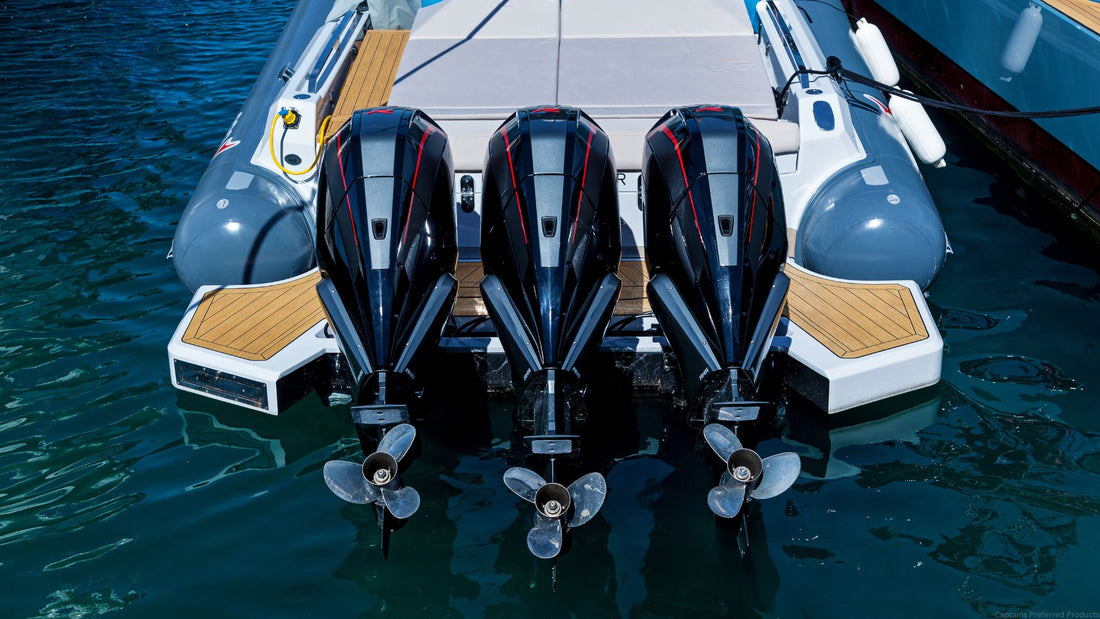
How to Winterize a Boat Motor: Guide for Inboard and Outboard Motors
Nicholas HeislerShare
Winterizing your boat is an essential step to protect your investment from the harsh effects of freezing temperatures. One of the most important steps in preparing your boat is winterizing the motor. If done properly, it ensures that your motor is ready for the next boating season and helps to avoid costly repairs. Here's a detailed guide to winterizing both inboard and outboard motors.
Why Winterize Your Boat Motor?
Boat motors, like any other engine, require protection during the off-season, especially in regions where temperatures drop below freezing. Without proper winterization, water trapped inside the engine or cooling system can freeze, expand, and cause severe damage to the engine block or other internal components. Additionally, internal parts of the motor are susceptible to corrosion when not properly maintained.
Winterizing an Inboard Motor
An inboard motor is built inside the boat's hull, and its components are more complex than outboard motors. Here are the key steps to winterize your inboard motor:
1. Flush the Engine
Before draining the water, flush the engine with fresh water to remove salt, dirt, and other contaminants. This can be done by connecting a hose to the water intake and running the engine at idle.
2. Drain the Water
After flushing, drain all the water from the cooling system to prevent freezing. Remove drain plugs from the engine block, exhaust manifolds, and other low points in the system.
3. Add Antifreeze
Fill the cooling system with marine-grade non-toxic antifreeze, which prevents any residual water from freezing. Attach a hose to the water intake and pour antifreeze into the system while the engine runs until it exits the exhaust.
4. Change the Oil
Old engine oil contains moisture and contaminants that can corrode engine parts. Drain the oil and replace it with fresh oil, ensuring you also change the oil filter.
5. Fog the Engine
Apply fogging oil to the engine's cylinders to protect against rust and corrosion. Remove the spark plugs, spray fogging oil into each cylinder, and then replace the plugs.
6. Check Belts and Hoses
Inspect belts and hoses for signs of wear or cracks. Loosen any belts to prevent them from becoming brittle during the winter months.
7. Protect the Fuel System
Add a marine-grade fuel stabilizer to the fuel tank and run the engine for a few minutes to circulate the stabilized fuel through the system. This helps prevent fuel breakdown and gum deposits over the winter.
Winterizing an Outboard Motor
Outboard motors are easier to winterize but still require careful attention to ensure they are protected during the winter. Follow these steps:
1. Flush with Freshwater
Run the engine in a freshwater tank or attach a flush muff and run the motor at idle for about 10 minutes. This will remove salt, sand, and other debris.
2. Drain Water
Tilt the motor fully down to allow all water to drain from the cooling system.
3. Add Antifreeze (if needed)
Some outboard motors may require antifreeze in colder regions, though it's not always necessary. If you're unsure, consult the manufacturer's manual.
4. Change Gearcase Oil
Drain the lower unit gearcase oil and inspect for any signs of water intrusion or metal shavings. Refill it with fresh, marine-specific gear oil.
5. Fog the Cylinders
Fogging oil is vital to protect the internal components from moisture damage. Remove the air intake cover and spray fogging oil directly into the carburetor or throttle body while the engine is running. Also, spray the fogging oil into the spark plug holes after turning the engine off.
6. Grease Moving Parts
Apply marine-grade grease to all moving parts such as throttle cables, propeller shafts, and steering components to prevent corrosion and rust.
7. Stabilize the Fuel
Add a fuel stabilizer to prevent the fuel from degrading over the winter. Run the engine for a few minutes to circulate the treated fuel throughout the system.
8. Remove the Propeller
Take off the propeller to inspect for damage and remove any fishing line or debris wrapped around the shaft. Store the propeller separately in a dry place to prevent corrosion.
Additional Tips for Both Motors
- Inspect Electrical Systems: Disconnect the battery, charge it fully, and store it in a cool, dry place. If you have multiple batteries, use a battery maintainer to keep them charged.
- Store in a Dry Place: Keep your boat stored in a dry, covered location, preferably indoors, or use a high-quality boat cover to protect it from moisture.
- Check for Manufacturer Guidelines: Always refer to the manufacturer's manual for specific recommendations and winterization procedures for your boat motor.
Is Your Motor Ready for Winter?
Winterizing your boat motor is a crucial part of boat maintenance that can help prevent serious damage and extend the life of your motor. Whether you own an inboard or outboard motor, following these detailed steps will ensure your boat is ready for the next season. Proper winterization protects your engine from freezing, corrosion, and fuel degradation, saving you time and money in the long run.
When it comes to keeping your boat's engine cowlings clean, look to Captains Preferred Products boat brushes and cleaning supplies. Find everything you need to keep your vessel squeaky clean all season - always at the best prices.




